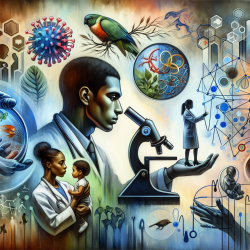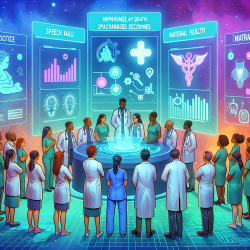Unlock the Secret to Better Outcomes: How Emerging Contaminants Research Can Transform Your Practice
In the ever-evolving field of speech-language pathology, staying informed about the latest research and integrating these insights into practice is crucial for optimizing outcomes for children. One such area of research that holds significant promise is the study of emerging contaminants and their impact on health, as discussed in the comprehensive review titled "Emerging Contaminants: A One Health Perspective."
Understanding Emerging Contaminants
Emerging contaminants (ECs) are newly identified or recently understood chemicals and biological agents that pose potential risks to human and environmental health. These include pharmaceuticals, personal care products, industrial chemicals, and microplastics, among others. The research highlights the importance of adopting a One Health approach, which emphasizes the interconnectedness of human, animal, and environmental health.
Implications for Speech-Language Pathologists
For practitioners in speech-language pathology, understanding the implications of ECs is essential. These contaminants can affect neurological development, which is critical for language acquisition and cognitive functions. By being aware of these factors, practitioners can better assess and address potential environmental influences on children's development.
Data-Driven Decision Making
Incorporating data-driven decisions into practice involves using evidence-based research to guide assessments and interventions. The research on ECs provides valuable data on the sources and impacts of these contaminants, offering insights that can be integrated into clinical practice. For example, understanding the potential neurotoxic effects of certain ECs can inform the development of targeted interventions and prevention strategies.
Encouraging Further Research
While the current research provides a foundational understanding of ECs, there is a need for continued investigation into their specific effects on child development. Speech-language pathologists can play a role in this research by collaborating with interdisciplinary teams to explore the intersections of environmental health and language development. Such collaborations can lead to innovative approaches and improved outcomes for children.
Conclusion
By integrating the findings from emerging contaminants research into practice, speech-language pathologists can enhance their ability to support children's development in a holistic manner. This approach not only addresses the immediate needs of children but also contributes to long-term health and well-being. Practitioners are encouraged to stay informed about the latest research and consider the broader environmental factors that may influence their clients.
To read the original research paper, please follow this link: Emerging contaminants: A One Health perspective.










